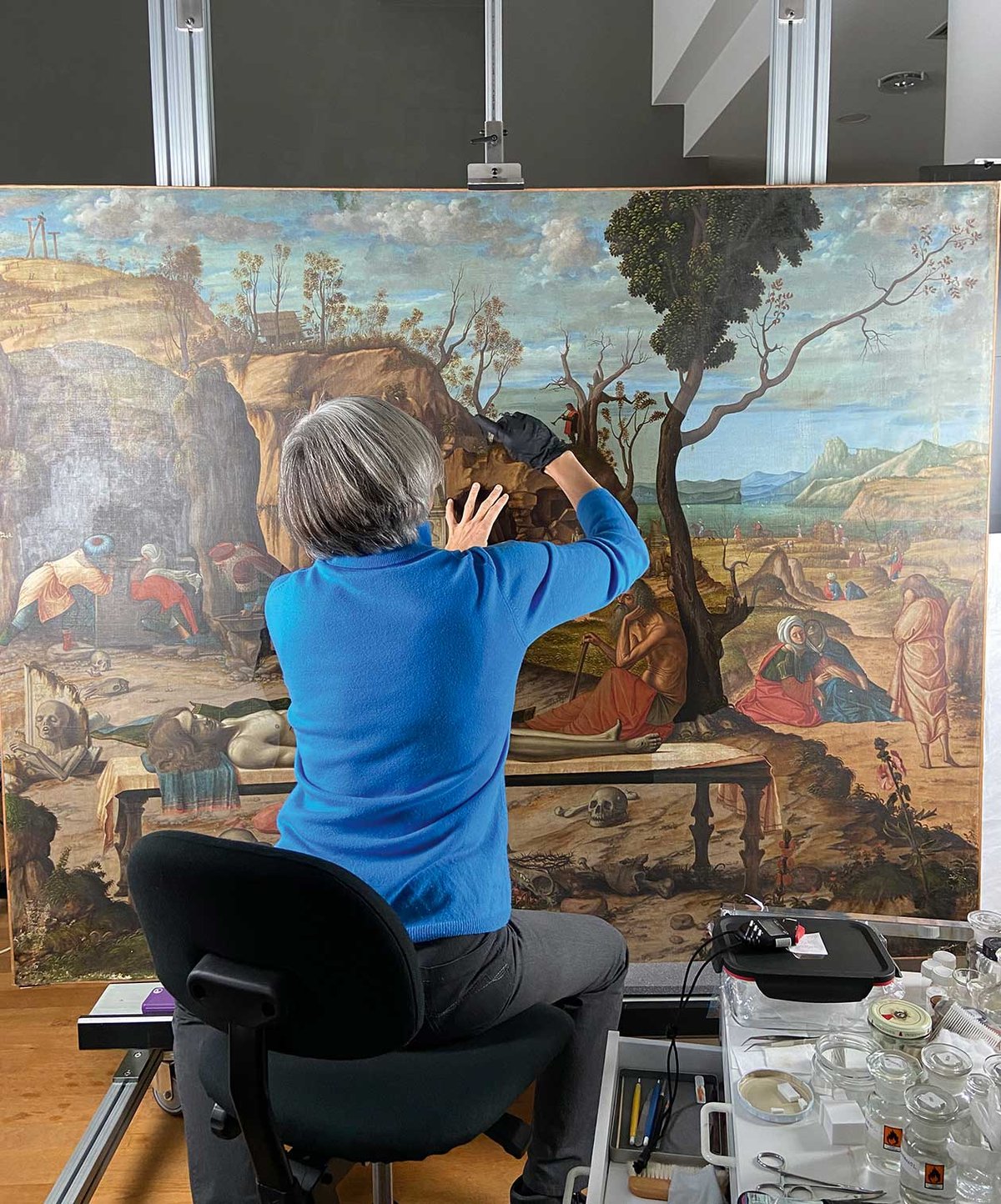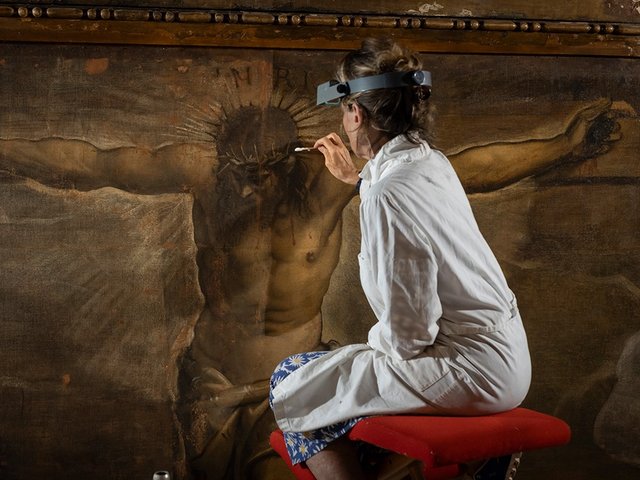With a vast maritime empire and firm control of overland Silk Road routes, Venice in the early 16th century was at its peak. The artist synonymous with those dazzling years is Vittore Carpaccio (around 1465-1525/26) whose religious scenes often had an urbane and elaborate splendour that places them immediately in what was then likely Europe’s richest enclave. To a remarkable degree, the major works of Carpaccio are still to be found in Venice proper, but Berlin’s Gemäldegalerie, which owns two important paintings by the artist, is a key outpost.
In the early 1990s, the museum’s The Ordination of St Stephen as a Deacon (1511), showing sophisticated crowds in an elegant cityscape, underwent a dramatic conservation treatment, restoring a full range of colours to its figures’ opulent costumes. In the 2020s, Berlin has turned to its second work by the artist—the eerie, otherworldly lamentation scene The Preparation of Christ’s Tomb (around 1505-20). After four years of treatment, which has included the removal of decades of dirt and discoloured varnish, the cleaned painting will be shown to the public for the first time this month, when it takes centre stage in a small exhibition, Tribute to Vittore Carpaccio, to commemorate the occasion (20 November-6 April 2026).
Remarkably, the last time Christ’s Tomb had a major treatment dates all the way back to the early 20th century, when Berlin’s legendary museum director, the German art historian Wilhelm Bode, acquired it for a forerunner of today’s Staatliche Museen zu Berlin. At the time, experts widely attributed it to Andrea Mantegna, in response to a false signature in the lower section of the painting. Bode’s keen connoisseurship reattributed the work to Carpaccio.
Though scholars have long followed Bode’s lead, placing Christ’s Tomb firmly in the Carpaccio oeuvre, the recent treatment did reinvestigate that red herring of a signature, if only to deduce when it was added. “I examined it very carefully under the microscope,” says Babette Hartwieg, the recently retired head of conservation at the Gemäldegalerie, who capped off her two-decade career in Berlin with restoring the painting. She concluded the signature may be “very, very old” but was added some time after the painting was finished.
Partly cloudy, clearly
More importantly, the treated painting has revealed all sorts of new subtleties, she says, citing the recovered differences between adjacent whites and grey. Without the distorting yellows, Christ’s stone-coloured body is now wholly distinct from his white tunic, she says.
The natural setting is unusual for the artist, known for his sumptuous interiors and fanciful architectural detailing rather than landscapes. And Hartwieg has also uncovered surprising aspects of the work’s looming sky. “I was sure the treatment would reveal a bright sky,” says Neville Rowley, the Gemäldegalerie’s curator for early Italian painting, who is co-curating the new exhibition with Hartwieg. But the removal of the dirt and old varnish now shows a combination of bright blue below with stubborn grey clouds above. For Rowley, the striking contrast echoes the work’s wider composition, which includes people grieving while others are merely going about their business. “You have figures in mourning and others who do not care,” Rowley says. “This ambiguity is one the most interesting features of the work.”
No figures have been released on the cost of the restoration, but Rowley concedes that the bijou exhibition, which comprises some dozen works from the Staatliche Museen’s own holdings, is a cost-cutting measure. An ideal show might have brought together other Carpaccio works—most notably, The Meditation of the Passion (around 1490) from New York’s Metropolitan Museum of Art. That related work includes a very similar depiction of Job—he is the red-tunicked figure in the Berlin painting shown sitting leaning against a tree in the foreground—and also once had a similarly false Mantegna signature.
On the bright side, Rowley adds, bringing works together from inside the Staatliche Museen, while rearranging some of the Gemäldegalerie’s own Venetian holdings, is a way of refreshing the permanent collection. Too often, “permanent just means boring”, he says. Tribute to Vittore Carpaccio is a chance to prove otherwise.






